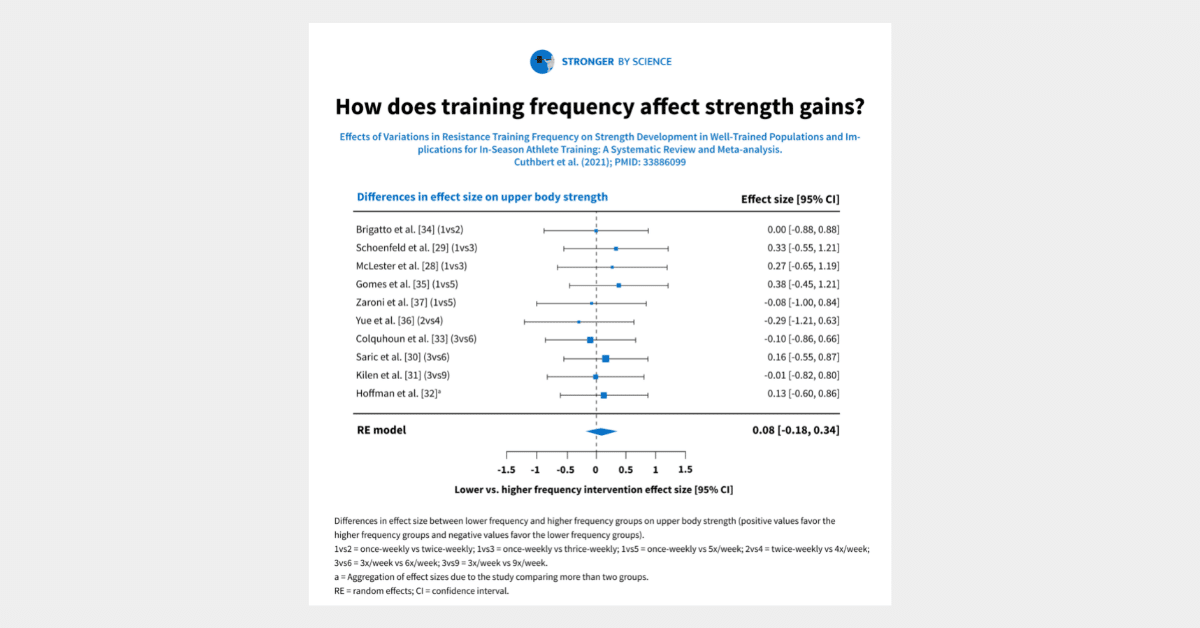Back in 2018, I wrote an article breaking down the research examining the effects of training frequency on strength gains. At the time, it looked like higher frequencies had a small but significant positive impact on strength gains. However, more research has come out since then, and the weight of the evidence has trended toward “no real difference.”
A recent meta-analysis by Cuthbert and colleagues (PMID: 33886099) analyzed all of the studies examining the impact of training frequency on strength gains in trained lifters. It found that, for both upper and lower body strength gains, training frequency didn’t have a meaningful impact on strength gains.
However, I still think it’s worth being open to higher frequencies for practical reasons. Most of the studies included in this meta-analysis used matched training volumes. Practically, higher frequencies may allow for higher training volumes, and/or higher average training quality, which may produce better results. In other words (just to illustrate), 15 sets of squats in a session may not be advisable, but five sets, three times per week would probably be pretty doable. At minimum, your performance will likely be more locked-in during your third squat session of the week, versus your 11th-15th sets of squats in a single workout. With that being said, if you’re doing fewer than ~10 sets per muscle group, per week, a once-per-week training frequency is probably perfectly fine.
It’s also worth noting that “not much of a difference, on average” doesn’t necessarily mean, “all frequencies work equally well for everyone.” When we don’t see some particular training approach consistently producing superior results in the majority of lifters, that simply gives us even greater license for self-experimentation. Feel free to try out different programming approaches that use different training frequencies for your main lifts, to see what clicks best for you (both your schedule and preferences, and your unique physiology).
I’ve found that lifters who take longer to recover between sessions tend to benefit from lower frequencies (rather than forcing per-session volume to be super low in order to make higher frequencies workable), and lifters who naturally recover faster tend to benefit from higher frequencies (mind-blowing stuff, I know), but ultimately, frequency is a training variable that doesn’t lend itself to one-size-fits-all recommendations. You’ll just need to experiment with it for yourself.






